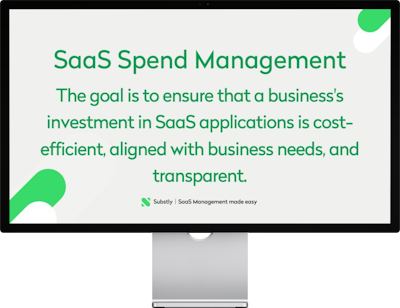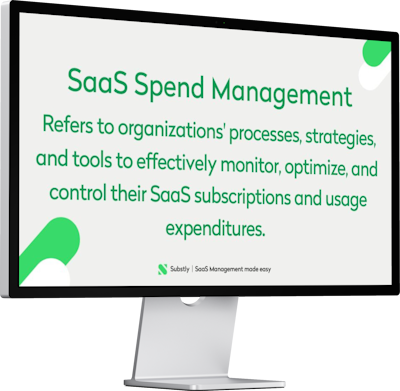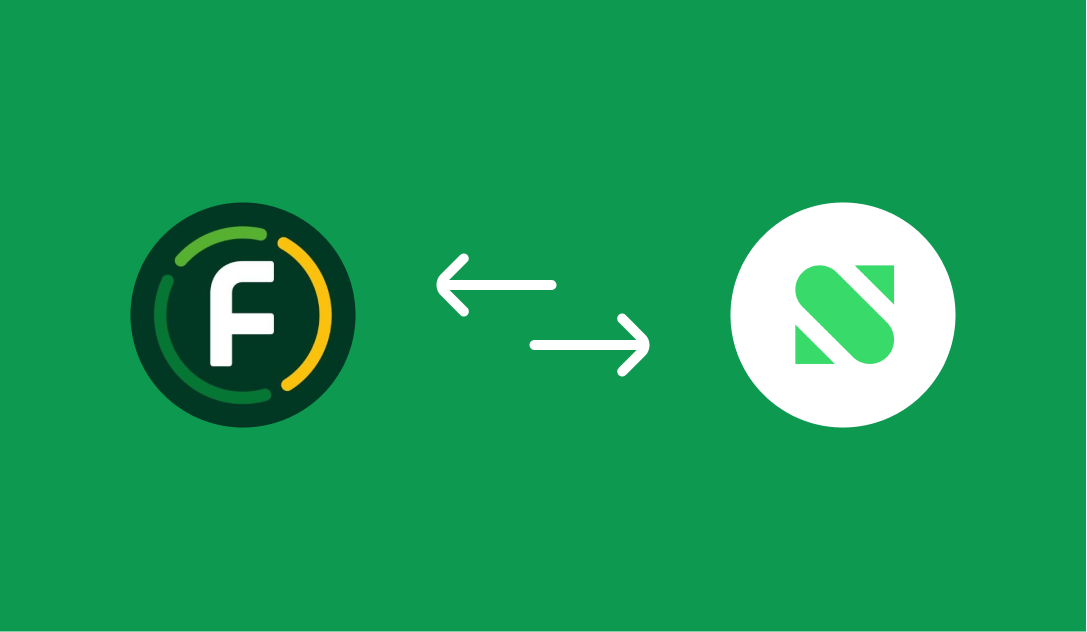Table of Content
The Rising Importance of SaaS in SMBs
Understanding SaaS Spend Management
Importance of Effective SaaS Spend Management
5 best practices of SaaS Spend Management
Key takeaways
- Taking a proactive approach to spend management will save valuable resources and enable companies to invest in the right tools that truly enhance their operations and competitiveness in the market.
- By identifying and tracking SaaS expenses, assessing utilization and value, negotiating with providers, implementing cost controls, and promoting employee awareness, organizations can optimize their SaaS spending and achieve maximum ROI.
- Continuously monitoring and refining SaaS strategies, small and mid-sized companies stay agile, cost-effective, and well-positioned for future growth.
In recent years, Software as a Service (SaaS) has revolutionized businesses' operations, offering cost-effective and scalable solutions for various needs. Small and mid-sized companies, in particular, have embraced the SaaS model, taking advantage of its flexibility and ability to streamline operations. However, with the increasing number of SaaS tools available, managing the associated costs has become a significant challenge for many organizations.
This blog post explores effective strategies for small and mid-sized companies to manage their SaaS spend, optimize costs, and achieve maximum return on investment.
The Rising Importance of SaaS in SMBs
Due to its numerous advantages, SaaS has become the backbone of many small and mid-sized companies. These companies can access advanced software and services without investing in costly infrastructure or extensive IT support. Additionally, SaaS offers a pay-as-you-go model, making it attractive for companies looking to keep their budgets in check.
For small and mid-sized companies, the ability to scale resources up or down based on their needs is a game-changer. With SaaS, companies can quickly adapt to changing market conditions and respond to customer demands without the burden of significant upfront costs. However, the growing adoption of SaaS has also led to the proliferation of software subscriptions, making it essential for SMBs to manage their SaaS spend effectively.
One of the main challenges small and mid-sized companies face is the risk of overspending on SaaS tools. The organization can lose track of its overall SaaS expenditure with various departments independently purchasing subscriptions. Moreover, unused or underutilized subscriptions can further drain resources, resulting in wasted spending.
To overcome these challenges, SMBs must implement effective SaaS spend management practices.
Understanding SaaS Spend Management
SaaS spend management involves adopting strategies to reduce the costs associated with SaaS platforms. This encompasses various checks and techniques, including benchmarking costs, eliminating redundant and vulnerable SaaS subscriptions, negotiating viable pricing plans, and more.
At the crux of SaaS spend management lies SaaS budgeting, a critical process that evaluates costs, analyzes them against performance metrics, and empowers companies to make informed decisions tailored to their unique use cases. As the adoption of SaaS products continues to rise, the significance of SaaS budgeting becomes increasingly evident, given the sustained investment in these tools.
Effective SaaS spend management enables companies to:
- Maintain tighter control over company spending by ensuring all expenses are justified and aligned with organizational goals.
- Identify and eliminate SaaS tools that no longer fit the bill or align with the organization's evolving requirements.
- Improve SaaS management, resulting in streamlined workflows and reduced operational complexities.
- Prevent unverified spending and the proliferation of shadow IT, where employees procure SaaS applications without proper approvals or knowledge from the IT team.

Importance of Effective SaaS Spend Management
Companies often see positive results from their SaaS investments, which is one reason the global Software as a Service (SaaS) market is projected to grow from €249 billion in 2023 to €827 billion by 2030, at a CAGR of 18.7%.
However, according to Gartner, organizations that fail to attain centralized visibility and coordinate SaaS life cycles will overspend on SaaS by at least 25%. There are thousands of euros to save each year with proper SaaS spend management.
- Visibility on Unused SaaS Apps: An effective spend management approach helps identify unused or redundant applications that have become irrelevant due to changing requirements. These apps are partially removed from the stack due to low accountability, causing unnecessary resource drain. By streamlining SaaS management, businesses can eliminate wasteful spending and save costs.
- Preventing Shadow IT: Shadow IT occurs when employees procure SaaS without the IT department's knowledge, leading to duplicate apps in the stack. An effective spend management strategy establishes procurement guidelines, preventing shadow IT and the associated risks of redundant applications while saving on SaaS costs.
- Avoiding Bad SaaS Licensing Decisions: Companies sometimes buy licenses for more users than needed, resulting in underutilized tools and resource inefficiencies. SaaS management encourages consulting internal teams and aligning procurement with actual requirements to optimize licensing decisions.
5 best practices of SaaS Spend Management
Getting started with SaaS spend management is crucial for companies looking to achieve cost efficiency, enhance productivity, and align their software investments with their overall business objectives. Below, we will explore five essential steps and best practices enabling you to embark on your spend management journey and drive meaningful results in your SaaS utilization and expenditure. These practices will give you the foundation to control your SaaS spending and optimize your software investments for sustainable growth and success.
Identifying and Tracking SaaS Expenses
To effectively manage SaaS spend, it's crucial for SMBs to start with a comprehensive inventory of all their subscriptions. Identifying and categorizing each SaaS tool will clarify the total cost and the benefits each subscription brings the company.
The first step is to audit all active SaaS subscriptions across the organization. This includes software used by different teams, individual departments, and any SaaS platform procured directly by employees (shadow IT). By centralizing this information, decision-makers can gain a holistic view of their SaaS landscape and identify opportunities for consolidation or cost optimization.
Dedicated tools such as SaaS spend management software simplify this process significantly. These tools can pull data from invoices, contracts, and usage reports, giving businesses insights into their SaaS spending. With clear visibility, decision-makers can make informed choices about which subscriptions to keep, modify, or terminate.
Assessing SaaS Utilization and Value Managing
SaaS spend isn't just about reducing costs; it's also about ensuring that the money spent delivers tangible value. SMBs must evaluate the utilization of each SaaS tool to determine if it's being maximized to its full potential. Low adoption rates indicate a need for further employee training or the possibility of replacing the tool with a more suitable alternative.
Pro Tip: Identify power users and understand how they derive value from specific SaaS apps, provide valuable insights into best practices, and encourage similar usage across the organization.
Companies should analyze their SaaS stack's user activity data and engagement metrics to assess utilization. Furthermore, it is essential to analyze the value each SaaS subscription brings to the organization relative to its cost. Some SaaS platforms may be critical for business operations, while others might be nice-to-haves. By prioritizing subscriptions based on value, companies can make strategic decisions about where to invest their SaaS budget most effectively.
Pro Tip: Implement a centralized SaaS spend management software that provides a comprehensive overview of all applications, contracts, and usage data. This allows for better tracking, analysis, and optimization of SaaS spend.
Regularly reviewing SaaS subscriptions is essential to ensure they align with business goals and needs. By continuously monitoring utilization and value, SMBs can make data-driven decisions about retaining, upgrading, or eliminating certain subscriptions.
Negotiating with SaaS Providers
For small and mid-sized companies, negotiating SaaS contracts can be a game-changer in cost optimization. Understanding the pricing models and comparing offers from different providers is key to securing favorable terms. Many SaaS providers are willing to negotiate, especially for long-term commitments or if you are ready to scale up your usage.
Pro Tip: Conduct market research and discuss with various vendors to assess their offerings, pricing models, and integration capabilities. This will enable you to make informed decisions and negotiate favorable terms.
Before entering negotiations, it's essential to understand the company's needs and potential future requirements clearly. With this knowledge, you can explore pricing options, such as tiered plans or volume discounts. Additionally, seeking advice from industry peers or engaging a third-party consultant can provide valuable insights and support during negotiations.
Pro Tip: Plan your SaaS purchases around festive seasons when vendors offer discounts and promotions. Consider opting for longer-term plans to capitalize on additional savings.
Furthermore, some SaaS providers offer free trials or pilot programs. These opportunities allow companies to test the software's suitability and value before committing to a long-term contract. Evaluating multiple options and comparing the results of pilot programs can help companies make informed decisions that align with their goals and budgets.
Implementing Cost Controls and Governance
Creating cost controls and governance policies is vital to prevent unchecked spending on SaaS. You can ensure that every purchase aligns with your budget and strategic goals by setting clear spending limits and implementing an approval process for new subscriptions.
Pro Tip: Set up a proactive renewal workflow in your SaaS spend management software that alerts you well before upcoming renewals. Use this lead time to negotiate competitive pricing and terms with vendors.
Designating a specific individual or team responsible for SaaS procurement and management streamlines decision-making and prevents duplicate or unnecessary purchases. This designated team can thoroughly evaluate potential new tools, ensuring they meet the organization's security, compliance, and integration requirements, which often lead to significant cost savings.
In addition to cost controls, you should establish governance policies that outline acceptable SaaS usage practices, data security measures, and compliance requirements. Communicating these policies to employees and providing training on their implementation will foster a culture of accountability and responsible SaaS usage.
Employee Training and Awareness
An often overlooked aspect of spend management is employee training and awareness. Educating employees about responsible SaaS usage and cost-consciousness can empower them to make better decisions when it comes to requesting new tools or features.
Pro Tip: Define clear metrics to measure the success of the SaaS stack. Collaborate with the finance team, HR, and IT team to establish key performance indicators (KPIs) and regularly evaluate the impact on the organization.
Regular communication about the organization's SaaS strategy and the importance of cost optimization can foster a culture of efficiency and accountability. Encourage employees to provide feedback on the tools they use and identify opportunities for improvement or potential savings.
Pro Tip: Schedule periodic audits in your spend management platform to evaluate application usage, adoption rates, and performance against established KPIs. Use data from audits to inform budgeting and decision-making.
Additionally, companies should organize training sessions to help employees get the most out of the available SaaS stack. By enhancing their proficiency, employees increase utilization rates and derive more value from the tools provided.
If you work in a small or medium-sized business and seek a SaaS management platform with a short learning curve that is user-friendly and strengthens the cooperation between IT and Business, consider exploring Substly to see if it suits your needs.
Related articles



.jpg?width=800&height=2000&name=5%20best%20practices%20of%20SaaS%20Spend%20Management%20(1).jpg)


